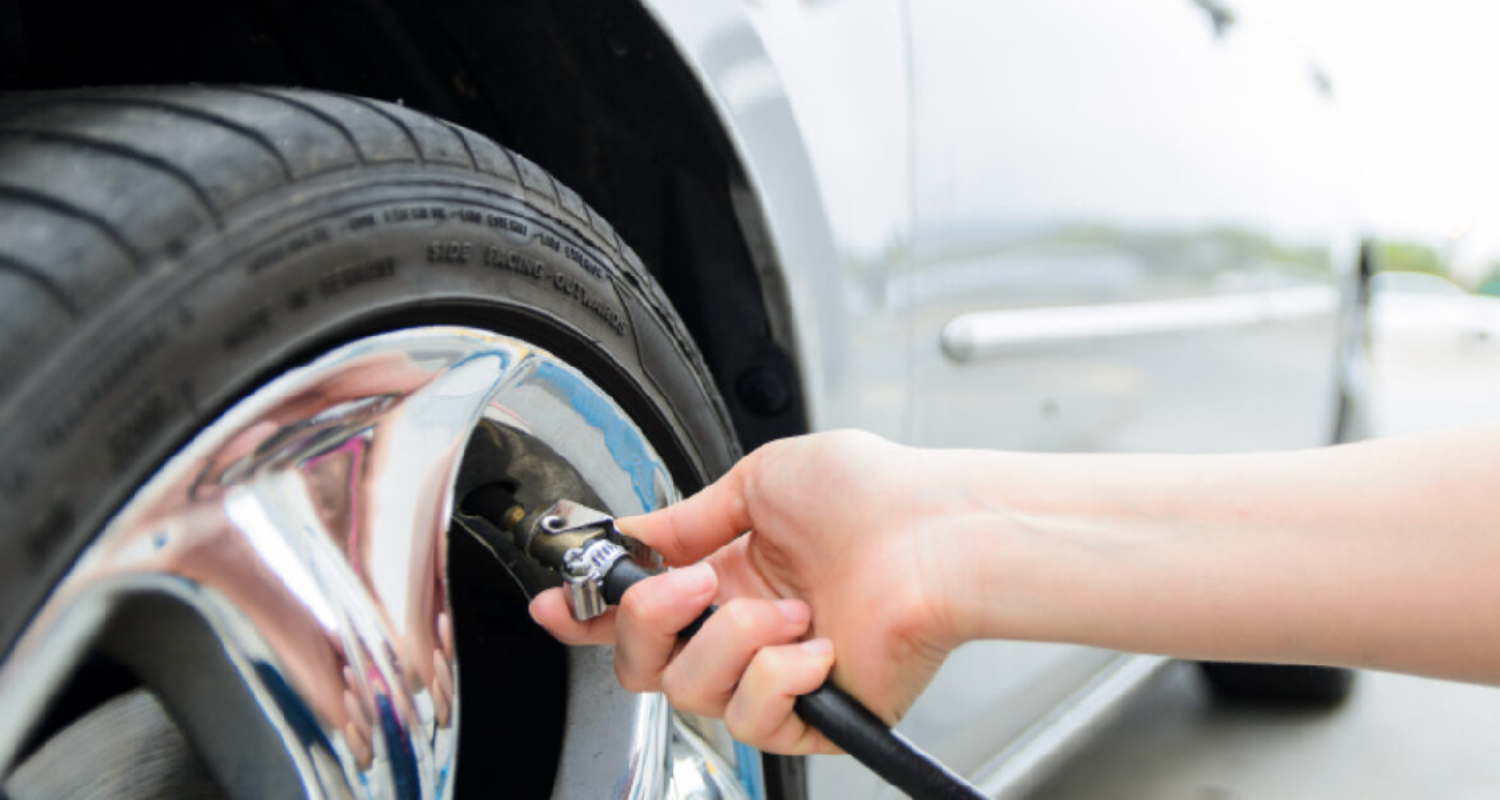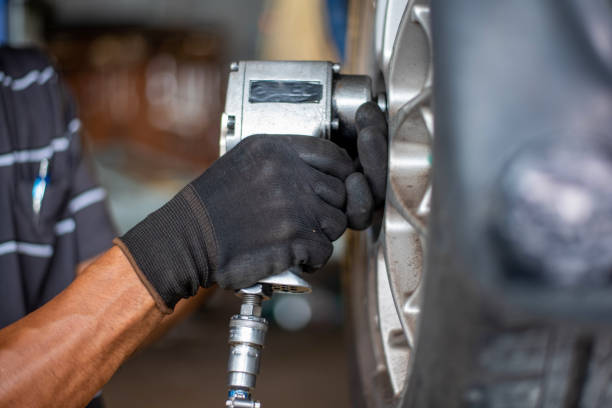To remove air from tires, locate the valve stem and press the pin inside the valve. Use a tire pressure gauge for accuracy.
Proper tire pressure is essential for safe driving. Overinflated tires can lead to reduced traction and uneven wear. It’s crucial to know how to release excess air. Begin by finding the valve stem, a small protrusion on the tire rim.
Press the pin inside the valve with a tire pressure gauge or a similar tool. Monitor the pressure regularly to maintain optimal levels. This simple task can increase your vehicle’s performance and extend the tire’s lifespan. Regular tire checks help in avoiding potential road hazards and improving fuel efficiency. Always ensure your tires are at the recommended pressure for a smoother ride.
The Importance Of Proper Tire Pressure
Maintaining proper tire pressure is crucial for your vehicle’s safety and performance. Properly inflated tires ensure better fuel efficiency, improved handling, and longer tire life. Let’s dive into why correct tire pressure is so important.
Risks Of Over-inflation
Over-inflated tires can lead to several issues. The most significant risks include:
- Reduced traction: Over-inflated tires have less surface contact with the road. This can lead to poor handling and increased stopping distance.
- Tire damage: Excess pressure can cause tires to wear unevenly. This can lead to premature tire failure.
- Harsh ride: Over-inflated tires make your ride less comfortable. You will feel every bump on the road.
Benefits Of Correct Tire Pressure
Maintaining the correct tire pressure offers many benefits. Here are some key advantages:
- Improved fuel efficiency: Proper tire pressure reduces rolling resistance. This helps your car use less fuel.
- Improved safety: Correctly inflated tires ensure better traction and handling. This reduces the risk of accidents.
- Longer tire life: Proper pressure helps tires wear evenly. This means you won’t need to replace them as often.
- Better ride comfort: Correct tire pressure provides a smoother and more enjoyable ride.
Maintaining proper tire pressure is simple but crucial. It helps keep you safe and saves money. Be sure to check your tire pressure regularly.

Tools You’ll Need
Removing air from tires is simple. You need a few tools for this task. These tools ensure you do it safely and correctly.
Pressure Gauge
The pressure gauge checks the tire’s air pressure. It tells you how much air to remove. Use it before and after deflating the tire.
| Pressure Gauge Type | Description |
|---|---|
| Analog | Uses a dial to show pressure levels. |
| Digital | Shows pressure on a digital screen. |
Valve Core Tool
The valve core tool removes the valve core. This tool is small but essential. It helps you release air quickly from the tire.
- Insert the tool into the valve stem.
- Turn counter-clockwise to remove the core.
- Be careful not to lose the valve core.
Air Compressor (optional)
An air compressor is optional but useful. It helps you refill air after deflation. This tool is handy if the tire pressure drops too much.
- Connect the compressor to the tire valve.
- Turn on the compressor to add air.
- Check the pressure gauge to ensure correct pressure.
Identifying Over-inflated Tires
Over-inflated tires can lead to a bumpy ride and tire damage. It’s essential to identify and correct this issue for a smoother drive.
Reading Tire Pressure
To check if your tires are over-inflated, you need a tire pressure gauge. This tool tells you how much air is in your tire.
First, remove the tire’s valve cap. Press the gauge onto the valve stem firmly. The gauge will display a number in PSI (pounds per square inch).
Compare this number to the recommended PSI for your vehicle. You can find this information in your car’s manual or on a sticker inside the driver’s door.
Signs Of Excessive Air
Over-inflated tires often have a hard feel. Press your hand against the tire’s surface to check.
Another sign is uneven tire wear. Over-inflated tires usually wear more in the center.
Your car might also feel less stable on the road. It could bounce more than usual, indicating too much air in the tires.
| Sign | Description |
|---|---|
| Hard Feel | Tire feels very firm when pressed. |
| Uneven Wear | More wear in the center of the tire. |
| Car Instability | Vehicle bounces more, less stable on the road. |
Ensuring your tires are properly inflated helps in maintaining control of your vehicle. It also extends the life of your tires.
Step-by-step Guide To Deflation
Removing air from your tires is an easy task. Follow this simple guide to deflate your tires safely.
Locating The Valve Stem
The valve stem is a small tube on your tire. It is where you fill air in. Find this tube on your tire.
Releasing Air Safely
To release air, remove the valve cap. Use a small tool or your nail to press the pin inside. You will hear the air escaping.
Make sure you press lightly to control the air flow. This helps in deflating the tire safely.
Checking Pressure Continuously
Use a tire pressure gauge to check pressure. Check after every few seconds of releasing air.
Keep releasing air until the tire reaches the desired pressure. Always check pressure to avoid deflating too much.
| Step | Action |
|---|---|
| 1 | Find the valve stem |
| 2 | Remove the valve cap |
| 3 | Press the pin inside the valve |
| 4 | Check tire pressure continuously |
Deflating tires is easy when you follow these steps. Keep your tires in good shape by checking pressure often.
Adjusting Air Pressure To Recommended Levels
Ensuring your tires have the right air pressure is crucial. It helps in providing a smooth ride and prolonging tire life. Here’s how to adjust air pressure to the recommended levels.
Finding Your Vehicle’s Recommended Pressure
First, you need to find your vehicle’s recommended tire pressure. This information is usually in the owner’s manual or on a sticker inside the driver’s door.
Refer to the table below for common locations:
| Location | Description |
|---|---|
| Owner’s Manual | Check the manual for specific pressure details. |
| Driver’s Door Sticker | Look inside the driver’s door for a pressure sticker. |
| Fuel Cap Door | Some vehicles have the information on the fuel cap door. |
Fine-tuning Tire Pressure
Use a reliable tire pressure gauge. Follow these steps:
- Remove the valve cap from the tire.
- Press the gauge onto the valve stem.
- Read the pressure on the gauge.
If the pressure is too high, release some air. Gently press the valve stem pin to let out air. If it’s too low, add air using a compressor.
Ensure all tires have the same pressure. This includes the spare tire. Properly inflated tires improve vehicle safety and fuel efficiency.

Post-deflation Checklist
After you have successfully removed air from your tires, it is essential to follow a thorough Post-Deflation Checklist. This ensures your tires remain safe and in good condition. Here are some crucial steps to take:
Rechecking Pressure After Driving
Once you have driven a short distance, it is important to recheck the tire pressure. Driving can cause pressure changes, and you want to ensure the tires are properly inflated.
- Use a reliable tire pressure gauge.
- Compare the readings with the manufacturer’s recommended levels.
- Adjust the pressure if needed.
Rechecking helps maintain optimal tire performance and safety.
Regular Maintenance Tips
Regular maintenance is key to tire health. Follow these tips to keep your tires in top condition:
- Inspect your tires for visible damage.
- Check tire pressure at least once a month.
- Rotate your tires every 6,000 to 8,000 miles.
- Ensure proper wheel alignment.
| Maintenance Task | Frequency |
|---|---|
| Inspect tires | Monthly |
| Check pressure | Monthly |
| Rotate tires | 6,000-8,000 miles |
| Wheel alignment | Annually |
Regular checks and maintenance ensure your tires last longer and perform better.
Frequently Asked Questions
How Do You Take Air Out Of A Tire?
To release air, use a tire pressure gauge or a valve stem tool. Press the valve to let air out.
How To Release Air Pressure From Tires?
Use a tire pressure gauge to measure the current pressure. Press the valve stem to release air. Check pressure again. Repeat until desired pressure is achieved.
What Happens If You Put Too Much Air In Your Tires?
Overinflated tires can cause uneven wear, reduced traction, and a harsher ride. They might also increase the risk of a blowout.
Is 40 Psi Too High For Tires?
40 PSI is generally too high for most car tires. Check your vehicle’s manual for the recommended tire pressure.
How Do You Remove Air From A Tire?
Use a tire pressure gauge or valve tool. Press the tool onto the valve stem to release air.
Conclusion
Proper tire maintenance is crucial for safety and performance. Removing air from tires is a simple yet essential task. Follow the steps outlined to ensure optimal tire pressure. Regular checks and adjustments can extend tire life and improve fuel efficiency.
Keep your tires in top shape for a smooth ride.





















